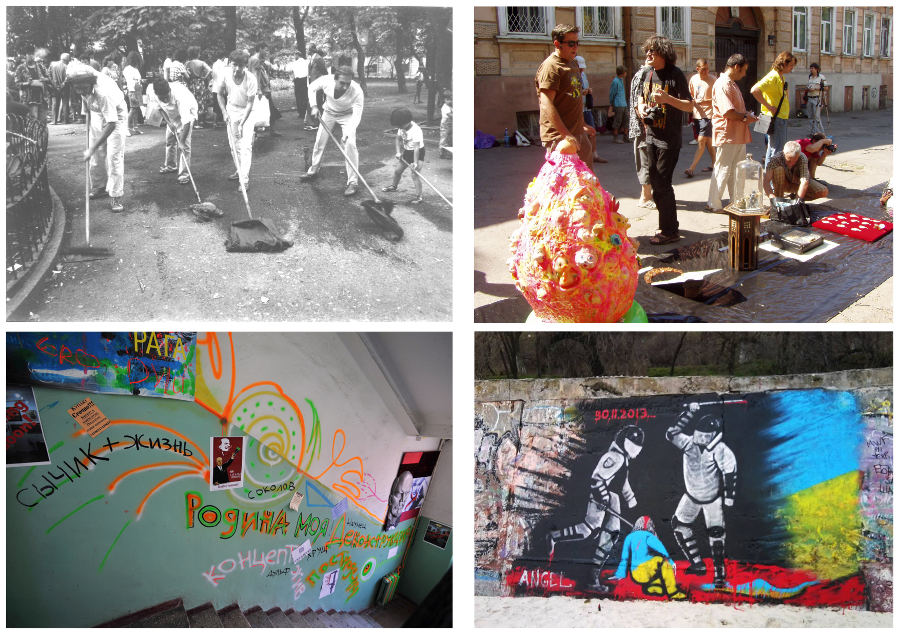Artist and City
25.12.2014 2023-12-08 14:25Artist and City

On December 27, 2014, the Museum of Odesa Modern Art opens a new hall – “The Artist and the City”, dedicated to the interaction of the artist and his environment.
In democratic countries, artistic interventions in the urban environment have long been the subject of art historical research and are actively involved in the everyday process of integrating art and life, and works end up in galleries and museums. In the post-Soviet space, in Ukraine in particular, “street art” still exists outside the boundaries of the institutional field – as a spontaneous alternative to official art. The hall opening at MoOMA is the first attempt to comprehend and present modern artistic practices in a museum format, creating a new way of expression – direct interaction between the viewer and the artist in the urban environment.
One of the most effective practices of such interaction is actionism – the artist’s invasion of public space, provoking the authorities to react and the viewer to think critically.”
In Odessa, the first such attempt was the “Fence” exhibition in 1967, when avant-garde artists Valentin Khrushch and Stanislav Sychev, whose works were once again not accepted for the exhibition, decided to independently show their paintings on the fence near the Opera House. Having lasted less than one day, the “Fence” exhibition allowed young artists to take a fresh look at their capabilities and forms of creativity.
In the 80-90s, there was a surge of actionist activity in Odesa. In 1984, artists walked through the streets of Odesa, littered with trees due to a hurricane, with posters “They will answer us for this.” The absence of a visible political component could not hide the contemptuous and ironic attitude of the authors towards the degrading political system. In 1987, in the Palais Royal Square, the following actions were held: “In a jiffy” and “Exploration of artistic deposits,” during which artists used mops to cleanse the garden of commercial art (“in a jiffy”) and explored and measured deposits of real art with theodolites. There were other equally interesting events. The implemented art projects significantly changed the local sociocultural situation.
In the 2000s, a new generation of artists emerged, whose work did not fit even more into the framework of the degrading “official art”. Artists who called themselves art raiders periodically bought old things at the Starokonny Market and created artistic objects from them, which were immediately exhibited on the sidewalks. The purpose of the actions was to involve various groups of the population in creativity, to bridge the gap between art and life.
Graffiti artists (writers) also involve city residents in a visual dialogue within the urban space. Like action artists, they extract art from its traditional museum and gallery world and move it into the living context of the street. Artists today increasingly act as analogues of the media, instantly reacting to the current situation in the country, increasing the activity of residents and forming civil society. The logical development of this movement was the participation of many writers in actions in support of Euromaidan.
The new hall presents exhibits, photos and video documentation of artists’ actions that have taken place on the streets of Odesa over the past 50 years. Collected for the first time on one site, they provide an opportunity to comprehend the results of how the artist creates his urban cultural space and how the images of the city, in turn, influence the consciousness of its inhabitants.
INFORMATION ABOUT THE EXHIBITION AND CONTACTS:
The opening of the “Artist and the City” hall will take place in the Museum of Odesa Modern Art on December 27 at 5:00 p.m. at the address: Odesa, str. Belinsky, 5.
